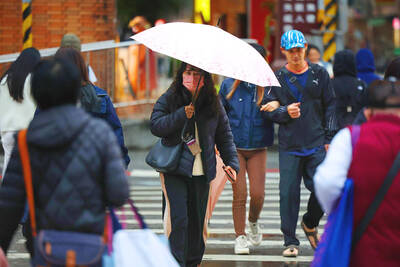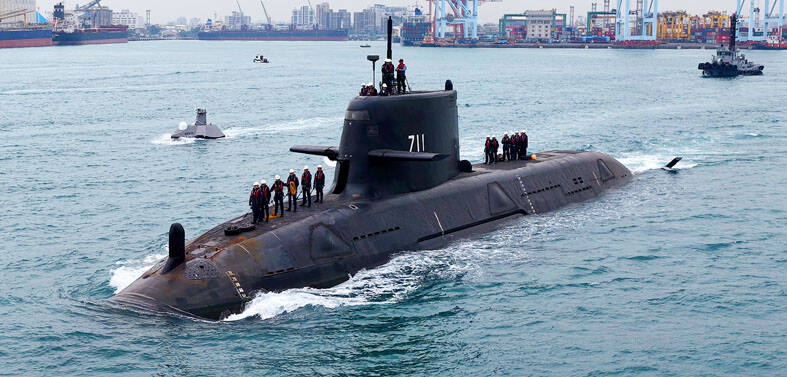Beijing has intensified its infiltration of Taiwanese media by inviting reporters to attend events aimed at informing them about its “31 measures” and “26 measures,” which are designed to attract Taiwanese to work and invest in China, a democracy watchdog said yesterday.
“We urge lawmakers to consider including regulations on ‘red media’ — media promoting a pro-Beijing agenda — in the anti-infiltration bill,” Taiwan Democracy Watch specialist Sung Cheng-en (宋承恩) said.
The Chinese government wants to influence Taiwan’s presidential and legislative elections, and promote the “26 measures” by increasing the frequency of tours for the Taiwanese media in China, Sung said.
Since 2008, Beijing has been operating a massive propaganda campaign designed to spin positive coverage about China to the world through the publication of paid content in Chinese-language media around the world, he said, adding that this is a long-term, systematic plan, not just a short-term phenomenon.
The government does not have an effective mechanism to combat Beijing’s infiltration of the media and the National Communications Commission regulates only the broadcast media, he said.
The anti-infiltration bill regulates political donations, lobbying and other activities, but not political propaganda, Sung said.
“If the government does not have the time to include such regulations in the bill, it should at least tell people about alternative solutions to the problem,” he said.
Statistics compiled by the watchdog showed that in the second half of this year, Beijing hosted an average of three cross-strait media events a month.
In July, 23 Taiwanese online media organizations allegedly posted articles published on Taiwan.cn, which launched attacks against the Taiwanese government, the watchdog group said.
These media organizations also posted a news release on the “26 measures” from China’s Taiwan Affairs Office immediately after they were announced last month, it said.
The group also said that China hosted a total of nine cross-strait media events in July and August.
One of the events, titled “A Colorful Tour in Guizhou Province,” invited Taiwanese and Chinese social media influencers along with staff from online and traditional news outlets, it said.
Taiwanese media representatives, as well as influencers on Sina Weibo, were in October invited to Hunan Province and 20 Taiwanese reporters purportedly attended a tour last month of Sanming County, it said.
Chinese media also reported that 20 Taiwanese media organizations — including the Chinese-language United Daily News and TVBS — last month attended a cross-strait media conference, at which participants discussed the 70th anniversary of the People’s Republic of China and the 40th anniversary of the “Message to Compatriots in Taiwan,” the group said.
The group quoted New Party legislator-at-large nominee Chiu Yi (邱毅), who was invited to address the participants, as saying: “May the voices of reporters be heard across the Taiwan Strait so that the goal of unification can be reached soon.”

SHIPS, TRAINS AND AUTOMOBILES: The ministry has announced changes to varied transportation industries taking effect soon, with a number of effects for passengers Beginning next month, the post office is canceling signature upon delivery and written inquiry services for international registered small packets in accordance with the new policy of the Universal Postal Union, the Ministry of Transportation and Communications said yesterday. The new policy does not apply to packets that are to be delivered to China, the ministry said. Senders of international registered small packets would receive a NT$10 rebate on postage if the packets are sent from Jan. 1 to March 31, it added. The ministry said that three other policies are also scheduled to take effect next month. International cruise ship operators

NUMBERS IMBALANCE: More than 4 million Taiwanese have visited China this year, while only about half a million Chinese have visited here Beijing has yet to respond to Taiwan’s requests for negotiation over matters related to the recovery of cross-strait tourism, the Tourism Administration said yesterday. Taiwan’s tourism authority issued the statement after Chinese-language daily the China Times reported yesterday that the government’s policy of banning group tours to China does not stop Taiwanese from visiting the country. As of October, more than 4.2 million had traveled to China this year, exceeding last year. Beijing estimated the number of Taiwanese tourists in China could reach 4.5 million this year. By contrast, only 500,000 Chinese tourists are expected in Taiwan, the report said. The report

Temperatures are forecast to drop steadily as a continental cold air mass moves across Taiwan, with some areas also likely to see heavy rainfall, the Central Weather Administration (CWA) said. From today through early tomorrow, a cold air mass would keep temperatures low across central and northern Taiwan, and the eastern half of Taiwan proper, with isolated brief showers forecast along Keelung’s north coast, Taipei and New Taipei City’s mountainous areas and eastern Taiwan, it said. Lows of 11°C to 15°C are forecast in central and northern Taiwan, Yilan County, and the outlying Kinmen and Lienchiang (Matsu) counties, and 14°C to 17°C

STEERING FAILURE: The first boat of its class is experiencing teething issues as it readies for acceptance by the navy, according to a recent story about rudder failure The Hai Kun (海鯤), the nation’s first locally built submarine, allegedly suffered a total failure of stern hydraulic systems during the second round of sea acceptance trials on June 26, and sailors were forced to manually operate the X-rudder to turn the submarine and return to port, news Web site Mirror Daily reported yesterday. The report said that tugboats following the Hai Kun assisted the submarine in avoiding collisions with other ships due to the X-rudder malfunctioning. At the time of the report, the submarine had completed its trials and was scheduled to begin diving and surfacing tests in shallow areas. The X-rudder,